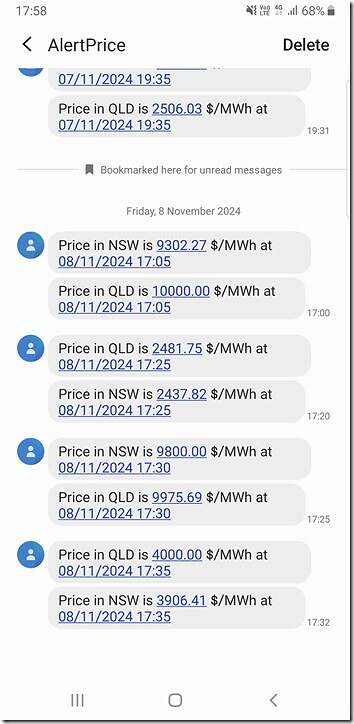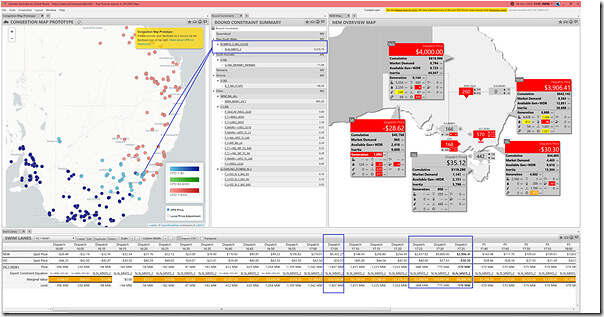It was more humid on the walk home from the Brisbane office late this afternoon … but at least there were not as many SMS pings as there were for price alerts on Thursday 7th November 2024, with the following being the capture of prices in any region above $1,000/MWh:
All times are NEM time.
Utilising time-travel in ez2view, here’s a quick review of the 17:35 dispatch interval … being the last in the list above:
No time to note more, other than to highlight that:
1) The VIC1-NSW1 interconnector was constrained such that the export limit was negative (i.e. such that the Target Flow must be 570MW south, despite the price difference!)
2) We see the Export Limit (which would ordinarily set the maximum flow north) is being set by the ‘N::N_MNYS_2’ constraint equation:
(a) which we we saw yesterday in (many more than) ‘Three dispatch intervals (sampled from a long run of volatility on Thursday 7th November 2024) to illustrate the complexity (and significance) of congestion’; and
(b) Which is a member of the ‘N-MNYS_5_WG_CLOSE’ constraint set
3) Looking back in recent history shown in the ‘Swim Lanes’ widget, this constraint equation (and others in the same Constraint Set) feature in:
(a) Setting the export limit on the VIC1-NSW1 interconnector; and
(b) Driving flow south, despite the price difference.
(c) Hence increasing the size of the ‘market’ to be supplied by generators in NSW and QLD
(d) Before even considering particular units being ‘constrained down’ reducing available supply options.




So are you saying that if the constraint equation wasn’t in place and Victoria which at the time had negative prices and was only running its coal plants at 35% capacity was exporting to NSW instead of Tasmania, prices in NSW and Queensland could have fallen 80-90%